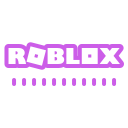UDim2 in RBLX: What Does It Mean for Developers?
UDim2 is a powerful data type used in the RBLX platform, particularly for the creation and management of user interfaces. It provides a way to specify both the position and size of UI elements in a flexible and scalable manner. Understanding UDim2 is crucial for developers looking to create responsive and dynamic interfaces in their RBLX games.
Understanding UDim2
In RBLX, UDim2 is utilized to represent two-dimensional sizes and positions, making it essential for UI layout. It combines two UDim values, one for the X-axis and another for the Y-axis, allowing for precise control over the UI elements. Each UDim value consists of two components:
- Scale: A fractional component that scales relative to the parent element's size.
- Offset: A pixel component that provides fixed distances.
This combination allows developers to create responsive designs that adapt to different screen sizes and resolutions.
Using UDim2 in Game Development
When designing a game interface in RBLX, UDim2 plays a critical role. It helps in:
- Positioning Elements: Use UDim2 to set the position of UI components relative to their parent containers, ensuring they are placed correctly on different screen sizes.
- Sizing Elements: UDim2 allows developers to define the size of UI components, enabling dynamic resizing that maintains the visual aesthetics across various devices.
- Creating Consistency: By leveraging UDim2, developers can ensure a consistent look and feel across the game’s interface, enhancing the player’s experience.
Strategic Implementation of UDim2
Implementing UDim2 effectively requires an understanding of its strategic use in game design:
- Combine Scale and Offset: For elements that need to remain proportionate across different screen sizes, use a mix of scale and offset to achieve balance.
- Test on Multiple Devices: Always test the UI on various devices to ensure that the UDim2 configurations perform as expected.
- Utilize Anchors: Align UI elements using anchor points to maintain their positions relative to the screen edges or other UI components.
For more in-depth information on how to effectively use UDim2 in your RBLX projects, visit the RBLX Wiki on Onlyfarms.gg.


